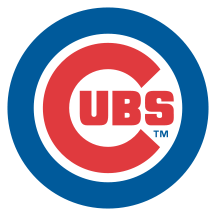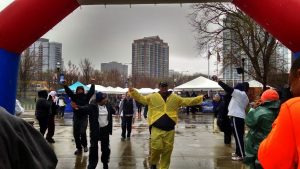June 16, 2009 – It isn’t easy to buy fresh fruit and vegetables in the Woodlawn neighborhood of Chicago’s South Side. Residents have to leave the neighborhood to go to a grocery store, and anyone without a car, the handicapped and the elderly have no options nearby to buy healthy food. The 61st Street Farmers Market is working to change that.
Experimental Station, a community group in Woodlawn, started the market last June in an effort to create a local food infrastructure of healthy and organic foods for residents.
Woodlawn is on the border of two of Chicago’s food deserts, a term used to describe neighborhoods with severely limited access to grocery stores – areas where residents pass liquor stores, fast-food restaurants and convenience stores before they even reach a grocer.
Eleven convenience and liquor stores are closer to the Woodlawn’s center at 63rd and Woodlawn Avenue than the nearest grocery store. The neighborhood stores with hand-painted signs and misleading names like Freshway Foods and The Food Basket sell mostly liquor, cigarettes and soda.
“When I walk around the neighborhood I don’t see any grocery stores,” said Dennis Ryan, the market manager for the 61st Street Farmers Market. “I see convenience stores and fast food restaurants and liquor stores that might sell you a bag of chips or a soda, but nothing that has fresh fruit or vegetables.”
Woodlawn is a “borderline zone, that does have food access needs,” Mari Gallagher, the president of the Chicago-based National Center for Research says. Gallagher is the author of the 2006 study ‘The Impact of Food Deserts on Public Health in Chicago,’ a study the market founders said was an inspiration to them.
“There’s not one single problem, and it will take multiple solutions,” Gallagher said. “A farmers market is still a good way to bring fresh produce into areas that need it.”
Kianna Crier, who lives three blocks from the market, said that the closest grocery store was at 75th and Stony Island in the South Shore neighborhood, a mile from the city’s southern border. “There’s really no place within walking distance for people to go to the store,” she said.
The market has the support of community leaders and is partnered with the University of Chicago’s Office of Community Affairs and the New Communities Woodlawn organization.
“It’s a great program,” said Community Affairs Vice President Sonya Malunda. “The university has worked with them and been very supportive.”
Even with dark clouds overhead, and a threat of rain, the small market is thick with people on June 6 – its second weekend of operation. Around 60 people visit the 20 vendors’ stands and listen to the acoustic soul music coming from the market’s center.
Shoppers are from Woodlawn and the surrounding area, but most are from Hyde Park. The market is open between 9 a.m. and 2 p.m. every Saturday until September.
“Just being here is such an awesome experience,” said Aquila Sadalah on her way to perform at the market’s music tent. She said it symbolized something greater – “we’re getting that we really have to take care of our own.” Sadalah said vendors were getting valuable business experience and learning the importance of relying on “the community.”
The 61st Street Farmers Market is not supported by the city, unlike its counterpart Green City Market in Lincoln Park. Its 20 vendors is up from 10 last year, but still less than half of the vendors doing business on Saturdays in Lincoln Park.
The main difference between the two markets is location, and how that location affects goals and operations. 61st Street Farmers Market addresses and deals with very different issues than North Side markets.
Chicago’s food deserts are almost exclusively on the South and West Sides, far from the Green City Market, according to Gallagher’s study. Lincoln Park and nearby neighborhoods have plenty of grocery stores and shoppers with good incomes to support them. The average income of Lincoln Park’s 64,000 residents is over $83,000, according to the most recent census data.
61st Street Farmers Market manager, Dennis Ryan, was the Green City Market manager until he left a year ago to run the market in Woodlawn. He is in a unique position to compare the two.
“I think the big difference is that we are operating out of a food desert so our mission is to provide healthy…affordable food to a community that doesn’t have access to that,” he said.
The market accepts the Link card, and food stamps to make the food more accessible to Woodlawn residents. Almost all of Woodlawn’s 27,000 residents make less than $15,000 a year with many making under $10,000, according to the New Communities Woodlawn Project.
That makes it hard for residents to afford the pricier fruits and vegetables. But Gallagher says it will save money in the long run.
“Healthy food does cost a little bit more than unhealthy food,” she said. “But if you add to the price of fast food the cost of treating obesity and diabetes the cost is actually very high.”

![Reblog this post [with Zemanta]](http://img.zemanta.com/reblog_c.png?x-id=c2e86d1a-a6a4-4e57-b1cb-578f514a9981)




Be First to Comment